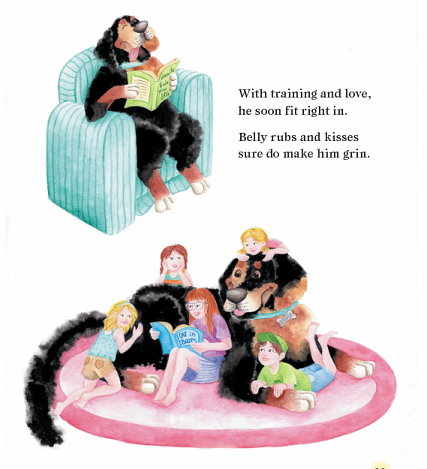Please Don't Tell Cooper He's a Dog by Michelle Lander Feinberg is about a beloved family pet Cooper who thinks and acts like a person. What does Cooper in the story? How does he behave? Keep reading to learn about Please Don't Tell Cooper He's a Dog and how you can introduce anthropomorphism to your students!
Disclosure: Affiliate links to Amazon are included in this post.
Author's Summary
Dogs are people too! At least, that is what Cooper the rescue dog believes! This hilarious, delightful dog adventure helps to teach young readers about kindness to animals and pet adoption. Children will also learn about a few European places as they follow Cooper on his solo adventure! Children's books 2 to 8 years old. Children's dog book. Picture books for children. Dog books for kids.🍎 Title: Please Don't Tell Cooper He's a Dog
🍎 Author: Michelle Lander Feinberg
🍎 Illustrator: Anna Mosca
🍎 Publisher: SDP Publishing Solutions
🍎 Date: November 7, 2020
🍎 Pages: 32
Talking About Pets
Please Don't Tell Cooper He's a Dog is an imaginary story about Michelle Lander Feinberg's dog Cooper. Cooper is a loveable dog who is a mixed breed golden retriever, rottweiler, and pitbull. On her website, Michelle Lander Feinberg describes Cooper:Cooper keeps us on our toes as he is a crazy young dog- full of energy and a true member of our family. He’s definitely a Mama’s boy, as he follows me around everywhere. He gives the absolute best snuggles.
(read more about Cooper: https://www.cooperthedog.com)
Before reading Please Don't Tell Cooper He's a Dog, take some time to talk with your students about their pets. What kind of pets do they have? What are their names? Do your students have any funny stories about their pets that they can share? Do you have a pet? If so, share a funny story or two about your pet too!
What Is Anthropomorphism?
As I mentioned in the first paragraph, anthropomorphism is the attribution of human characteristics and behavior to animals and objects. When reading Please Don't Tell Cooper He's a Dog with your students, it's important for them to recognize when anthropomorphism is being used. They don't need to know and remember the word; they just need to recognize when the animals and objects are acting like people.Sometimes Cooper behaves like a regular dog, doing typical dog things in Please Don't Tell Cooper He's a Dog. Other times, you see him waterskiing or eating from a plate at the dinner table. Look at the illustrations and text together. What are some examples of Cooper acting like a dog? What are some examples of him acting like a human? For example... is it normal for dogs to ride in a car? Of course! We see dogs doing it all of the time. But... is it normal for dogs to take the steering wheel and try to drive? Of course not! Is it normal for dogs to lay on the couch while their owners read books? Of course! But is it normal for dogs to sit on the couch and read their own books? Of course not!
Note: Most elementary schools and their textbooks use the word personification instead of anthropomorphism. Not a problem. It's easier for people to remember that PERSONification is when an animal or object acts like a PERSON. To learn about the subtle similarities and differences between anthropomorphism and personification read Anthropomorphism & Personification: What's the Difference? by Kathy Edens.
Reality vs. Fantasy
If you are reading Please Don't Tell Cooper He's a Dog with early readers who aren't ready to learn about anthropomorphism yet, you can introduce reality and fantasy to them instead. As you read the book with your young readers you can ask them the same questions... is it normal for dogs to ride in a car? Is it normal for dogs to take the steering wheel and try to drive? Is it normal for dogs to lay on the couch while their owners read books? Is it normal for dogs to sit on the couch and read their own books? Can Cooper do these things in reality? Can he do them for real?
To learn more about Please Don't Tell Cooper He's a Dog and about Cooper himself, please visit Michelle Lander Feinberg's author website:
(Next Article: Marvelous Masks by Nicole Billick)







